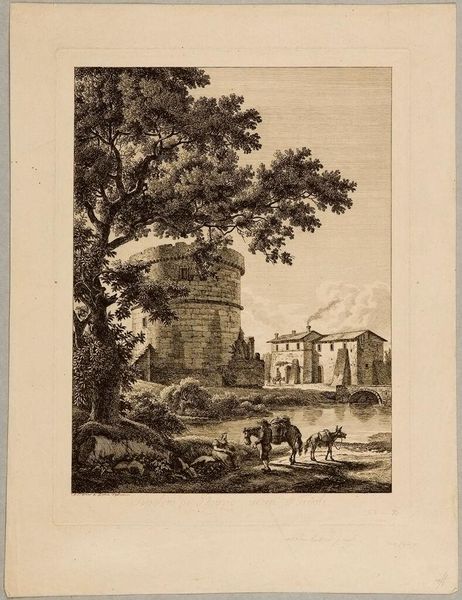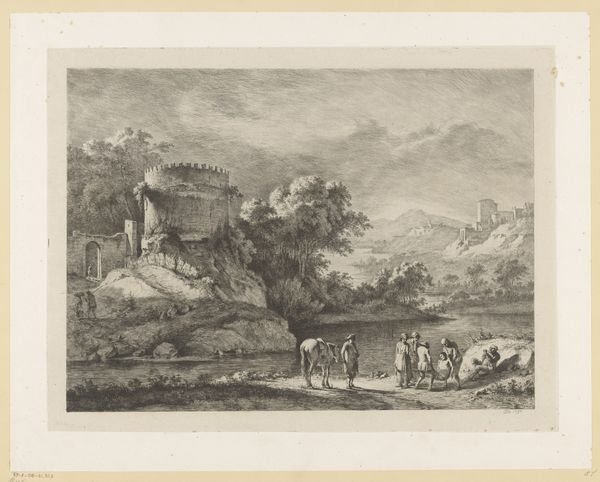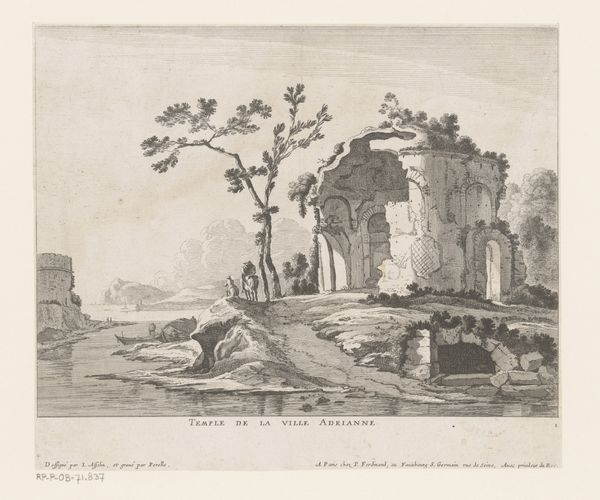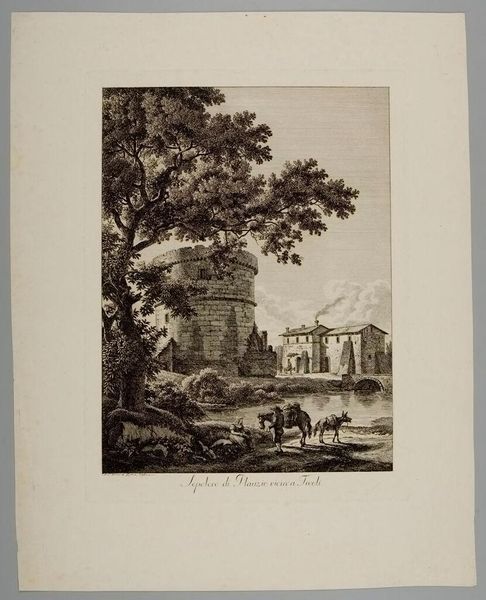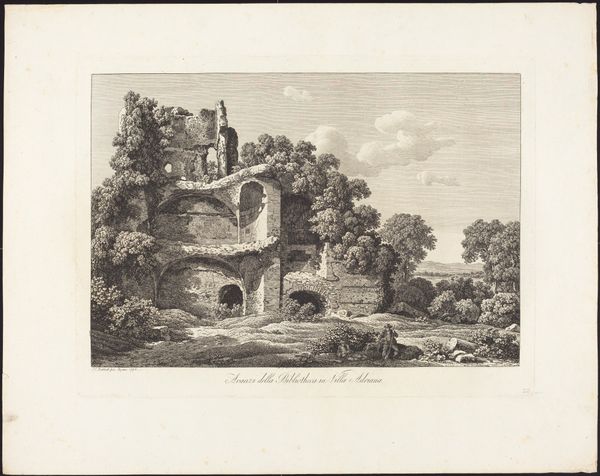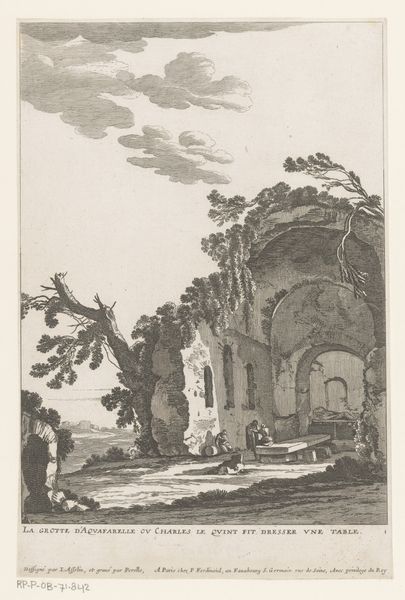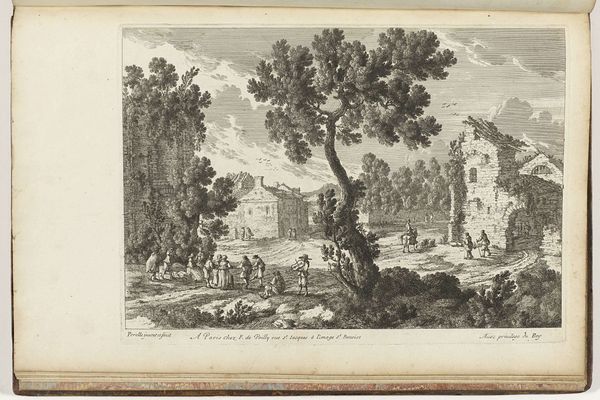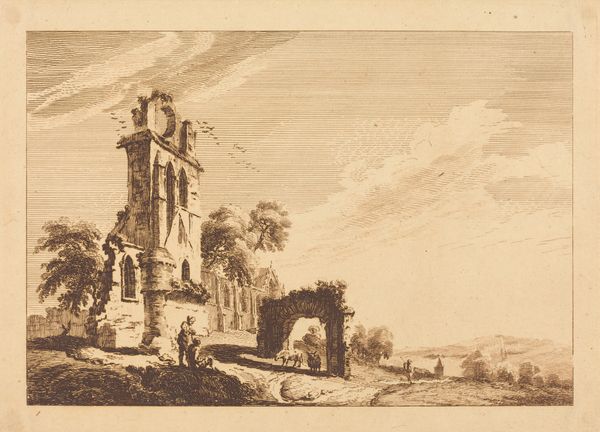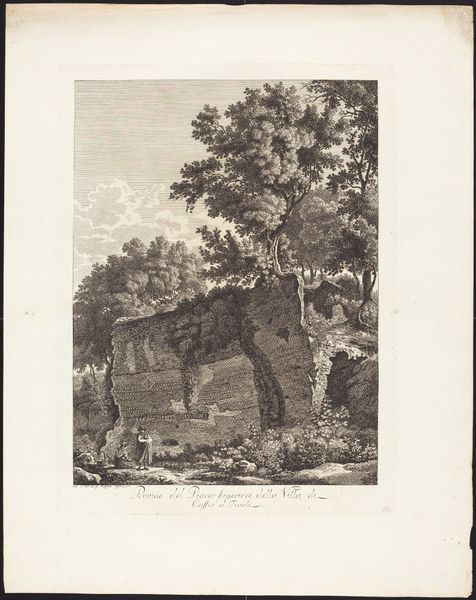
drawing, print, etching, paper, ink, pen
#
pen and ink
#
drawing
#
neoclacissism
#
pen drawing
#
ink paper printed
# print
#
etching
#
landscape
#
paper
#
ink
#
pen
Dimensions: plate: 37.6 x 28.1 cm (14 13/16 x 11 1/16 in.) sheet: 49.2 x 39.2 cm (19 3/8 x 15 7/16 in.)
Copyright: National Gallery of Art: CC0 1.0
Curator: Take a moment with Albert Christoph Dies’ etching from 1795, titled *Sepolcro di Plauzio vicini a Tivoli*. It’s an ink drawing, a scene rendered with delicate lines. What do you notice first? Editor: A melancholy calmness. That ancient ruin – it exudes a stoic acceptance. The dark tree on the left looms, contrasting the quiet domestic scene of figures with pack animals, almost indifferent in front of this looming tomb. Curator: Precisely. This evokes the Grand Tour aesthetic, where ruins were not merely remnants but poignant symbols. Notice how the tomb’s circular form suggests cyclical time, a constant return? Editor: Definitely, and how Dies has rendered it, as if both grandiose and intimate simultaneously! I see in its stones the echoes of empires and then… daily lives unfolding in its shadow. That feels… layered. Almost archetypal. Like something always present in our collective imagining of landscape. Curator: The iconography of ruins signifies mortality, the transience of human endeavor set against the enduring power of nature. Here, the living literally co-exist, almost obliviously, to the silent monument. Editor: It's a stark juxtaposition! We carry on our mundane errands even amongst history and mortality. But those ruins, they do whisper a warning or maybe offer a perspective. They are witness to endless comings and goings. Curator: And I suspect Dies’ use of simple lines elevates this print beyond mere topographical study. The Neoclassical love for order gives the scene both beauty and a subtle edge, a feeling that even idyllic nature has been witness to profound sorrow. Editor: It really gets you pondering the silent language of the past, and the curious dance between permanence and impermanence, doesn't it? Even the artist's mark contributes to this meditation. Curator: Indeed, a reminder that everything fades, including our interpretations. A landscape of loss becomes a space for renewal, as even art, this print included, makes the invisible visible to the viewer and us.
Comments
No comments
Be the first to comment and join the conversation on the ultimate creative platform.
